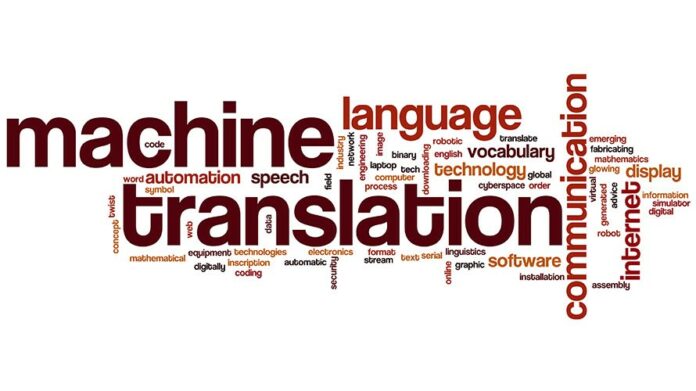Over the decade, translation has progressed to the next level generation. Once upon a time considered to be a hectic and time-consuming day job, translation is now one of the most progressing jobs to ever exist. In this article we will discuss about Exploring the Best Practices of Machine Translation.
Since the use of AI, machine translation is faster, efficient, and generates better results too. Being on a continuous development cycle, machine translation is changing the translation industry by day and night.
Since the launch of Google Translate, machine translation awareness sky-rocketed. Internet users’ experience also improved in finding new search queries and locating new websites of various products and services.
It’s a marvelous technology where you can translate the word(s) in any language you want. The majority of search engines besides Google also take one step towards machine translation like Yahoo, Microsoft, Baidu, etc. Each search engine now supports its version of MT.
Evaluating the Best Machine Translation Practices 2022
Why not play smart? If you want to succeed in the challenging market competition, especially as a translation service provider, you need to evolve your practices. It involves using machine translation tools for localization and translation.
But not every practice is reliable; you need to configure some of the best practices that best meets your needs.
1. The use of Translation Memory is vital with Machine Translation
Machine translation has been around for a long while now, although it wasn’t that common back in the day. Now, after a decade as machine translator evolved, the number of users interacting with machine translator has reached up to half a million by now.
Google Translate is the best example of machine translation. Free of cost and available in majority languages, it’s been a helpful tool for internet users. The most common downside of machine translator is the level of accuracy. Almost every other translation is “almost accurate” in terms of literal meaning, but what if the context is based on jargon or different cultural context? When users faced this limitation, Google Translate produced quite several ironic translation results.
Moral: use of translation memory is necessary; it needs constant updates to keep the translation as accurate as possible. A machine translator cannot automatically update the information, terminologies, and preferences, and so on. So if you want top-quality results from machine translator, then keep updating the translation memory.
2. Accountable for Unique Preferences
Every internet user is different and unique, so Google pays close attention to the user’s preferences. Following Google’s footsteps, several other search engines like Baidu or Yahoo launched their version of machine translation. But they failed to be accountable for the user’s preferences.
When you use machine translator, please know this: it is not easy to set the parameters and interpret the user’s preferences. Therefore, it is easier for a professional translation service provider to identify user’s preferences as per geographical location, culture, language, and interest. When a translation memory software is used, you need to pay close attention to the context of translation.
To improve the streamlined process, it’s best to avoid continual edits and guide the machine’s interpretation. It will prove beneficial to improve the text flexibility from source material to the target material.
3. Measure the KPIs
Key Performance Indicators are the metrics used to measure translation quality. It’s essential to set a specific standard to see how accurate your translation is. But how can you set the standards?
Before you set a series of standards, you need to have detail about the resource material. There is no set standard because every translation project and the use of the language pair is different. So one standard is not applicable for every project.
For instance, older blogs would value less than recent blogs. If a blog is irrelevant, then the translation’s accuracy will not be a priority for a variety of reasons. Let’s suppose the translation accuracy for a legal document is primarily essential even if its an old document. Terminologies cannot be compromised as at some point; it will come handy in case studies and so on.
4. Proofreading and Reviewing
Machine translation indeed is a faster substitute for a pool of human translators. Quite a brilliant advantage for the translators, but once the translation is completed, the proofreading stage becomes compulsory.
To ensure the best level of accuracy and consistency, it is of utmost importance to combine machine and human translation. Even the experts agree with the point of view. To rely on either one type of translation will generate biased results. So it suffices to say an expertly-tuned machine translator approach comes with a better probability.
A professional language service provider uses alternative methodologies to ensure a consistent translation. Therefore, many do bristle over the idea of machine translation, but it was one of the innovative tools which have now become a necessity for the translation industry.
So once a reviewer looks at your website, for instance, to review the website and other translation work to ensure that the already available translation projects have good reviews by different clienteles.
It’s exciting to see that machine translator has matured the translation process and improved the accuracy level. Still, head translators (most experienced translators) are better equipped for the job for reviewing purposes.
Language service providers use a hybrid combination i.e., use of the machine and human translation. However, at some point, the use of machine translator does suffice too. A good investment in machine translator leads to a better clientele reach.
The good verdict!
Over the years, machine translation will evolve and lead to enormous progress in human communication and the cross-cultural business world.
To prosper in the multilingual world, you need to work alongside the best translators and developers to ensure the best machine translator practices; otherwise, you can go in a downward spiral path of an automated process. So the best way to jumpstart your way in machine translator is to accumulate your practices and continue towards progress.


